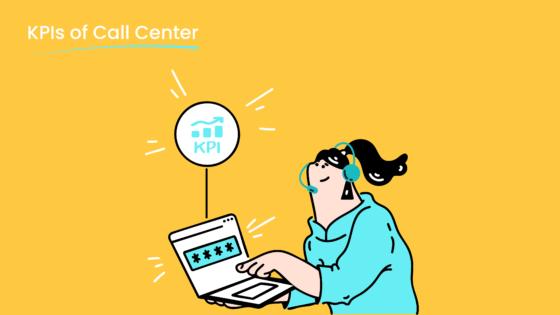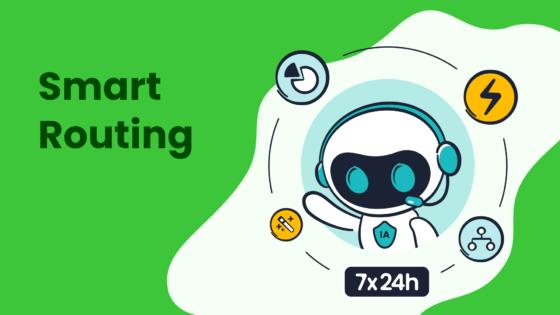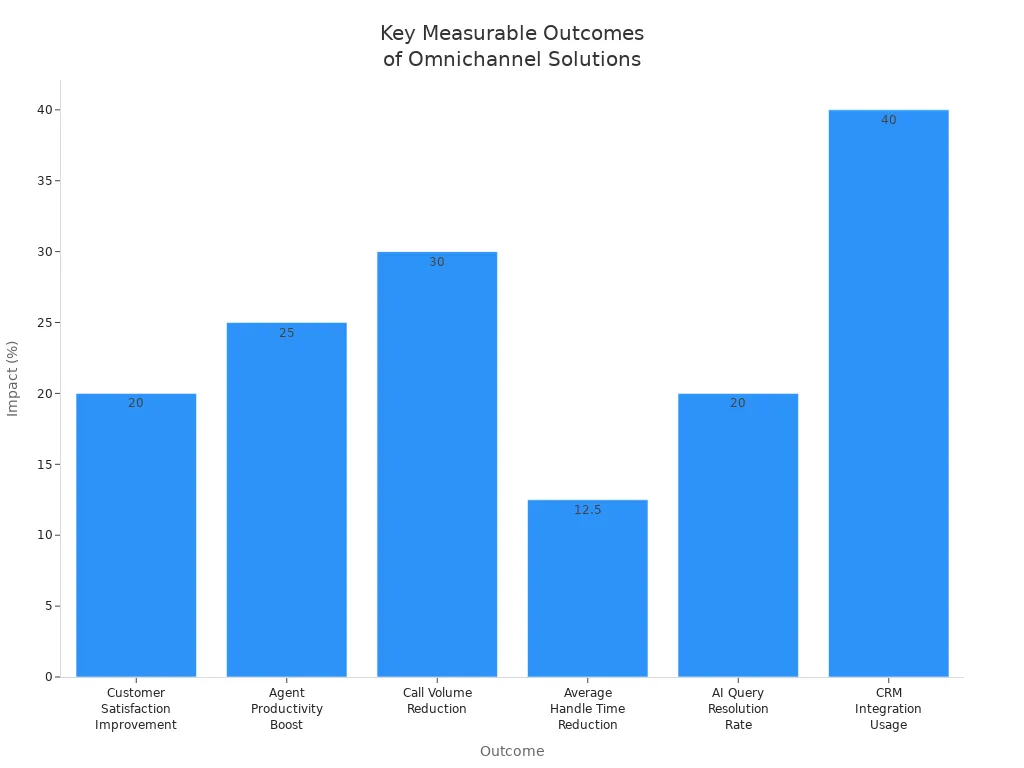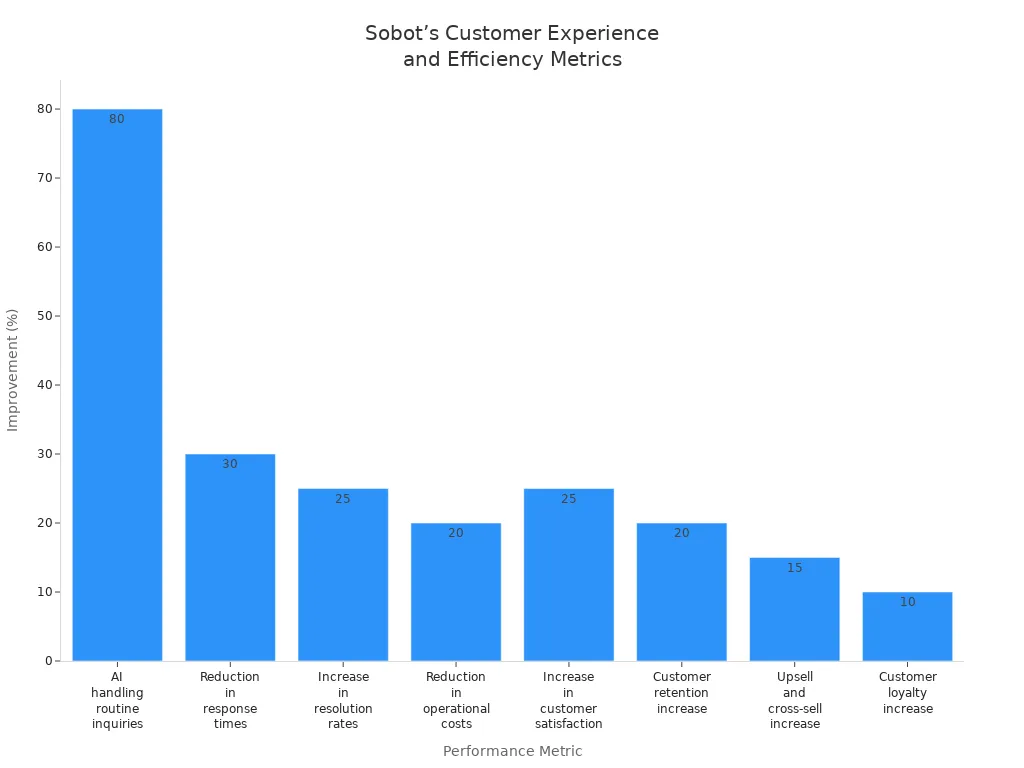How AI and Data Analytics Drive Call Center Optimization

AI and data analytics have sparked a transformation in call center optimization, driving measurable gains for businesses worldwide. The global call center AI market is set to reach $4.1 billion by 2027, fueled by the need to reduce costs and improve efficiency. Companies report up to a 50% reduction in operational costs and a 25% boost in customer experience after adopting AI-driven solutions. Sobot leads this shift, providing advanced Sobot AI tools that automate routine tasks and deliver actionable insights. Organizations now see optimization as essential for delivering seamless service and achieving sustainable growth in the call center environment.
AI and Data Analytics in Call Center Optimization
Modern call centers rely on advanced analytics and AI to transform call center operations. These technologies help companies improve operational efficiency, deliver better customer service, and achieve customer service excellence. Sobot stands out as a leader in this field, offering integrated solutions that unify communication channels and provide actionable insights for data-driven call centers.
Defining AI in Customer Service
AI in call center quality management uses machine learning, natural language processing, and automation to enhance every aspect of customer service. Companies deploy AI-powered chatbots and virtual assistants to answer questions, resolve issues, and guide customers through processes. These systems work around the clock, providing 24/7 support and reducing the need for human intervention in routine tasks.
AI technologies in customer service include:
- Predictive customer analytics that anticipate needs and personalize interactions.
- Agent assist tools that suggest responses and retrieve information instantly.
- Machine learning for feedback analysis, identifying trends and improving service quality.
- Multilingual support and voice-activated systems that make service accessible to everyone.
AI in call center quality management also enables intelligent triaging, automated ticket resolution, and real-time agent support. These features help agents focus on complex issues, while AI handles repetitive tasks. As a result, centers see faster response times and higher customer satisfaction.
Data Analytics for Call Centers
Data analytics plays a critical role in optimizing call center operations. By analyzing large volumes of call data, companies can identify patterns, measure performance, and make informed decisions. Advanced analytics tools track key metrics such as average handle time, agent utilization, and customer satisfaction.
| Metric | Analytics Application | Impact on Call Center Performance |
|---|---|---|
| Average Handle Time (AHT) | Identifies bottlenecks and enables targeted training to reduce call duration. | Improves efficiency and customer satisfaction. |
| Average Speed of Answer | Optimizes staffing and training to lower wait times. | Enhances customer experience. |
| Agent Utilization Rate | Monitors workload balance to prevent burnout. | Ensures efficient agent deployment. |
| Agent Effort Score (AES) | Highlights obstacles and informs process improvements. | Boosts agent and customer satisfaction. |
| First Response Time | Prioritizes inquiries and integrates chatbots for faster responses. | Reduces wait for initial contact. |
| Average Hold Time | Guides training and workflows to minimize hold times. | Reduces frustration and speeds up resolutions. |
Call center analytics also support real-time monitoring, allowing supervisors to provide immediate feedback and coaching. Predictive analytics forecast call volumes, helping managers allocate resources efficiently and reduce customer wait times. These data-driven insights lead to continuous improvement in call center operations.
Sobot’s Approach to Optimization
Sobot takes a unique approach to call center optimization by integrating AI and advanced analytics across all communication channels. The platform’s Five-AI system combines omnichannel AI, scenario-based AI, multi-faceted AI, generative AI, and secure AI to deliver seamless customer service. Sobot’s unified workspace brings together data from e-commerce, social media, websites, apps, email, and SMS, giving agents a complete view of each customer.
- Sobot supports integration with CRM, ERP, and ticketing systems, enabling personalized service and efficient workflows.
- The platform provides over 300 statistical reports with thousands of indicators, making it one of the most comprehensive solutions for process monitoring and quality inspection.
- Sobot’s human-centered AI focuses on experience, ease of use, and efficiency, helping centers achieve operational efficiency and customer service excellence.
Real-world results show the impact of Sobot’s ai-driven solutions. For example, Samsung increased agent efficiency by 30% and achieved a 97% customer satisfaction score after implementing Sobot’s platform. These outcomes demonstrate how transforming call center operations with advanced analytics and AI leads to measurable improvements in performance and customer experience.
Automation and Workflow Optimization
AI-Powered Chatbots and Voicebots
AI-powered chatbots and voicebots have become essential in modern call center operations. These tools handle routine questions and tasks, allowing agents to focus on more complex issues. Centers that use AI chatbots see first-level resolution rates above 70%, with average speed of answer dropping to under five seconds. Voicebots provide 24/7 support, eliminating wait times and improving customer experience.
- AI support agents improve Customer Satisfaction Scores by up to 27% through faster, more accurate responses.
- First-call resolution rates increase by about 30%, reducing repeat calls and operational costs.
- Chatbots and voicebots reduce average handling time by 40%, boosting agent productivity and customer satisfaction.
Sobot’s AI-powered voicebot and multilingual chatbot deliver consistent, context-aware responses. This ensures customers receive help quickly, while agents can focus on high-value interactions.
Intelligent IVR and Call Routing
Intelligent IVR (Interactive Voice Response) and smart call routing systems play a key role in automation for call centers. IVR systems reduce labor costs by handling routine inquiries, with payment-related calls costing about $0.50 each compared to $5 or more for live agents. Efficient call routing improves first call resolution by up to 25%, reducing callbacks and associated costs.

- Cloud-based IVR systems, like those in Sobot’s Voice/Call Center, scale easily without costly infrastructure.
- Improved agent morale and productivity result from reduced call volume and complexity.
These features drive operational efficiency and measurable improvement in workflow.
Unified Workspace with Sobot
A unified workspace brings all customer interactions and data into one platform. Sobot’s unified workspace allows agents to manage calls, messages, and tickets from multiple channels in a single view. This reduces manual work, improves agent productivity, and supports operational efficiency.
Automation tools in call centers target repetitive tasks such as manual data entry, which can take up to 20% of an agent’s day. By automating these tasks, centers see measurable improvement in workflow and team morale.
Sobot’s platform enables real-time monitoring and analysis, helping managers adapt strategies quickly and drive continuous improvement.
Predictive Analytics for Resource Management

Forecasting and Staffing
Advanced analytics play a vital role in forecasting call volumes and staffing needs in call center operations. Centers use bottom-up forecasting to break down call volumes by channel, skill, and queue. This method increases accuracy and helps centers plan for busy periods or special events. Accurate forecasting ensures the right number of agents are available, reducing wait times and improving customer satisfaction.
| Cost Component | Percentage of Total Cost | Impact of Predictive Analytics on Optimization |
|---|---|---|
| Agent Salaries & Benefits | 60% – 70% | Optimizes scheduling and training to reduce labor costs |
| Technology & Software | 15% – 20% | Identifies underused tools and improves call routing efficiency |
| Overhead (Facilities, etc.) | 10% – 15% | Helps plan for peak times to allocate resources efficiently |
| Training & Quality Assurance | 5% – 10% | Enables targeted training by pinpointing common customer issues |
| Miscellaneous (Telecom) | <5% | Reveals inefficient routing or contracts needing renegotiation |
Centers that use advanced analytics for staffing avoid overstaffing and understaffing. This proactive optimization leads to cost savings and better service quality. Data-driven decision making replaces guesswork with real-time insights, supporting smarter resource allocation.
Real-Time Monitoring
Real-time monitoring gives managers and supervisors a live view of call center operations. Advanced analytics tools track agent performance, queue status, and customer interactions as they happen. Supervisors can listen to live calls, provide instant feedback, and coach agents during calls.
- Real-time insights help centers spot compliance issues and risky language right away.
- Managers can adjust staffing on the fly, moving agents to busy queues or channels.
- 100% call coverage ensures no customer is left waiting.
Centers benefit from faster response times, higher first call resolution rates, and improved customer satisfaction. Real-time monitoring supports data-driven decision-making and continuous improvement in call center operations.
Sobot’s Data-Driven Insights
Sobot empowers data-driven call centers with advanced analytics and AI-powered tools. The platform provides over 300 indicators and customizable dashboards for deep analysis of customer interactions. Sobot’s unified workspace brings together data from all channels, giving agents and managers a complete view of customer insights.
- AI in call center quality management enables smarter responses and workflow automation.
- Sobot’s real-time insights help centers identify trends, reduce operational costs, and improve response times.
- The knowledge operation team at Sobot supports chatbot optimization, ensuring high accuracy in automated responses.
Companies using Sobot report significant improvements in operational efficiency and customer satisfaction. Data-driven decision making and data analytics drive continuous improvement, making Sobot a trusted partner for proactive optimization in modern call center operations.
Enhancing Customer Experience with AI

Personalization in Customer Interactions
AI transforms customer interactions by enabling real-time personalization in call center environments. Advanced analytics give agents instant access to client profiles, past purchases, and previous conversations. This information allows agents to tailor responses, offer targeted discounts, and recommend products that match customer preferences. Customers feel valued and understood, which increases customer satisfaction and builds loyalty. AI-driven solutions also automate routine queries, freeing agents to focus on complex issues and improving overall service quality.
| AI Tool | Functionality & Features | Impact on Customer Satisfaction and Loyalty |
|---|---|---|
| AI-powered Personalization | Real-time analysis of customer data, targeted offers, and proactive recommendations | Higher satisfaction, deeper trust, and long-term loyalty |
Advanced analytics and virtual assistants help centers deliver seamless, proactive, and personalized customer experiences. These improvements foster emotional connections and trust, which are essential for customer retention.
Sentiment Analysis
Sentiment analysis technology helps centers understand customer emotions during interactions. By analyzing speech and text, advanced analytics detect frustration or satisfaction in real time. For example, if a customer expresses repeated concerns, the system assigns a negative sentiment score. Agents can then respond with empathy and prioritize urgent cases. This approach improves customer satisfaction and helps centers identify trends that require internal investigation.
- Captures authentic emotions across all customer interactions.
- Enhances agent coaching by linking sentiment trends to performance.
- Pinpoints root causes of frustration or delight.
- Drives improvements in products and processes.
- Enables proactive issue resolution, preventing escalation.
Sentiment analysis leads to better customer insights and higher service quality.
Omnichannel Solutions by Sobot
Sobot’s omnichannel solution integrates advanced analytics and AI-driven solutions across all communication channels. Agents manage calls, chats, emails, and social media from a unified workspace, ensuring consistent customer experience. Automation reduces call volumes by up to 30%, while agent productivity rises by 20-30%. Customer satisfaction improves by up to 20% in retail sectors, and first response times drop below 30 seconds in high-performing centers.

Sobot’s platform empowers centers to deliver faster resolutions, reduce abandonment rates, and gain actionable customer insights. These measurable outcomes highlight the value of omnichannel integration for modern call center operations.
Operational Benefits and Call Centre Optimisation
Reducing Wait Times
Advanced analytics and automation have transformed how centers manage customer interactions. AI-powered systems process information quickly, routing calls to the right agent or department. This reduces wait times and improves customer satisfaction. For example, a telecom provider saw a 60% drop in call waiting times after using AI for smart call routing. AI chatbots handle common issues instantly, freeing agents to focus on complex requests. Sobot’s unified workspace and intelligent IVR ensure customers get immediate support, even during peak hours. These improvements in call center operations lead to faster response times and higher satisfaction scores.
Improving First Contact Resolution
First contact resolution (FCR) is a key metric in call centre optimisation. AI-driven analytics help agents detect issues and resolve them on the first call. Machine learning and speech analytics identify customer needs, allowing agents to provide accurate answers. Automated chatbots and virtual assistants offer 24/7 support, reducing the need for follow-up calls. Sobot’s platform uses advanced analytics to guide agents with real-time recommendations. OPPO, a global smart device leader, achieved an 83% chatbot resolution rate and a 94% positive feedback rate after implementing Sobot’s solutions. Higher FCR rates mean fewer repeat calls and better customer satisfaction.
Increasing Efficiency and ROI
Call center optimization delivers measurable gains in operational efficiency and return on investment. Advanced analytics track metrics like average handle time, agent performance, and customer satisfaction. Organizations report up to a 16% reduction in handle time and a 15-20% boost in satisfaction scores after adopting AI and analytics. Sobot’s automation tools streamline workflows, reduce manual tasks, and improve agent productivity. A retail enterprise using AI saw a 90% drop in call handling costs and a 30% improvement in FCR. These results show that call centre optimisation not only cuts costs but also drives continuous improvement in customer interactions and business outcomes.
Implementation and Best Practices
Steps for Successful Integration
A structured approach helps organizations achieve successful AI and data analytics integration in call center optimization. The following steps guide teams through the process:
- Assess the current call center infrastructure and identify areas for AI and data analytics enhancement.
- Set clear goals, such as reducing Average Handle Time (AHT), improving First Call Resolution (FCR), and increasing Customer Satisfaction Score (CSAT).
- Select AI tools and data analytics platforms that fit operational needs and integrate with existing systems. Cloud-based solutions often offer flexibility and scalability.
- Customize AI solutions in collaboration with vendors to ensure seamless workflow integration.
- Provide comprehensive training for staff to build confidence in using AI and data analytics tools.
- Continuously monitor performance using key metrics and customer feedback, refining strategies for ongoing call center optimization.
Tip: Pilot testing new AI features before full deployment can help identify potential issues early and ensure smooth adoption.
Overcoming Challenges
Organizations often face several challenges during AI and data analytics implementation for call center optimization:
- Data quality and privacy compliance require careful management.
- Understanding complex human conversations and industry-specific needs can challenge AI models.
- Integrating new AI tools with legacy systems may need flexible architectures.
- Scalability and cost control remain important for high-volume centers.
- Ensuring effective collaboration between agents and AI tools is essential.
Companies address these challenges by maintaining high-quality, privacy-compliant datasets, customizing AI with domain-specific training, and using modular, scalable solutions. Training agents to work alongside AI and data analytics tools also supports better outcomes.
Sobot’s Support and Services
Sobot provides robust support throughout the AI and data analytics integration journey. The platform uses AI-powered quality assurance systems to analyze customer interactions and deliver real-time feedback to agents. This approach identifies training opportunities and supports continuous improvement in call center optimization.
Sobot’s solutions include AI chatbots for 24/7 support, live chat for complex issues, and a smart ticketing system to automate issue tracking. The AI-driven voice technology enhances call handling efficiency, while ongoing coaching helps agents develop new skills. These services ensure organizations maximize the benefits of AI and data analytics in their call center operations. For more details, visit Sobot’s official website.
Future Trends in Call Center Optimization
Emerging AI Technologies
The next five years will bring rapid changes to call center optimization. Several AI technologies are set to transform the industry:
- Generative AI-powered chatbots and autonomous agents will automate routine interactions, providing 24/7 support and freeing agents for complex tasks.
- AI-driven hyper-personalization will use real-time data and emotional cues to tailor every customer interaction. Today, 71% of consumers expect personalized service.
- Natural Language Processing (NLP) advancements will help machines better understand customer language, improving satisfaction and operational insights.
- AI-enhanced quality assurance will analyze every customer interaction, increasing accuracy and allowing agents to focus on higher-value work.
- Ethical and responsible AI use will become a priority, ensuring trust and compliance.
Hyper-personalization powered by AI will move beyond basic techniques, tracking real-time conversations and providing agents with prompts tailored to each customer’s unique experience.
The Evolving Role of Agents
AI is changing what it means to be a call center agent. Agents now focus on complex, sensitive issues that require empathy and judgment, while AI handles routine tasks like password resets or order status checks. Companies invest in upskilling agents to work with AI tools, such as real-time prompts and advanced analytics dashboards. New roles, like AI supervisors and knowledge managers, are emerging. Over 90% of customer interactions will still involve live agents, showing that AI augments rather than replaces humans. The hybrid human-AI model improves productivity and customer satisfaction without reducing the workforce.
| Agent Role | AI Impact | Result |
|---|---|---|
| Routine Tasks | Automated by AI | Agents focus on complex cases |
| Complex Issues | Supported by advanced analytics and AI tools | Better service delivery |
| New Positions | AI supervisors, knowledge managers | Enhanced team expertise |
Preparing for the Future
Call centers can prepare for AI-driven changes by following these steps:
- Maintain updated knowledge bases with regular reviews and agent input to ensure AI accuracy.
- Invest in agent training and change management to help staff understand and use AI tools.
- Continuously monitor AI recommendations and gather feedback to fine-tune performance.
- Integrate AI tools with CRM systems for personalized, context-aware customer assistance.
- Run pilot programs to test AI solutions before full rollout.
- Balance automation with human expertise, ensuring agents handle complex inquiries.
Sobot leads these innovations with AI-powered chatbots, multilingual support, and advanced analytics. Its no-code implementation and unified workspace make adoption easy for businesses of all sizes. Companies like Mico have seen response times drop by 80% and agent efficiency rise by 20% after switching to Sobot, proving its readiness for the future of call center optimization.
AI and data analytics have driven a transformation in call center optimization, delivering measurable improvements in efficiency and customer experience. Sobot’s solutions stand out by automating routine tasks, enabling real-time sentiment analysis, and optimizing staffing. Key benefits include:
- Faster response times and reduced wait times.
- Improved first-call resolution through AI-driven insights.
- Enhanced customer satisfaction and loyalty with personalized service.
- 24/7 support that meets global demands.
- Stronger data security and operational continuity.

Sobot continues to lead this transformation, helping organizations achieve higher retention and satisfaction rates. Companies seeking to future-proof their customer experience should consider Sobot’s innovative platform as the next step in their digital journey.
FAQ
What is call center optimization, and why does it matter?
Call center optimization uses AI and data analytics to improve efficiency, reduce costs, and boost customer satisfaction. Companies see up to a 50% drop in operational costs after adopting these solutions. Sobot helps organizations achieve measurable gains through advanced call center optimization tools. Source
How does Sobot use AI and data analytics in call center optimization?
Sobot integrates AI-powered chatbots, intelligent IVR, and real-time analytics to automate tasks and provide actionable insights. These features help agents resolve issues faster and improve first contact resolution. Sobot’s unified workspace supports seamless call center optimization across all channels.
Can Sobot’s solutions scale for global call center optimization?
Yes. Sobot supports global telephony, multilingual chatbots, and a 99.99% uptime SLA. The platform manages over 6 million online communications and 3 million phone calls daily. Sobot’s cloud-based system ensures reliable call center optimization for businesses of any size.
What are the main benefits of using data analytics in call center optimization?
Data analytics tracks key metrics like average handle time and customer satisfaction. Managers use these insights to allocate resources, train agents, and improve workflows. Sobot’s analytics dashboard provides over 300 indicators, making call center optimization data-driven and effective.
How quickly can a company implement Sobot’s call center optimization solutions?
Most organizations deploy Sobot’s solutions within days. The platform offers no-code integration, mobile compatibility, and seamless CRM connections. Sobot’s support team provides training and ongoing assistance, ensuring a smooth transition to AI-driven call center optimization.
See Also
Best Call Center Analytics Tools To Use In 2024
Understanding Voice Analytics Technology For Call Centers
Ways To Improve Call Center Efficiency Through Monitoring
